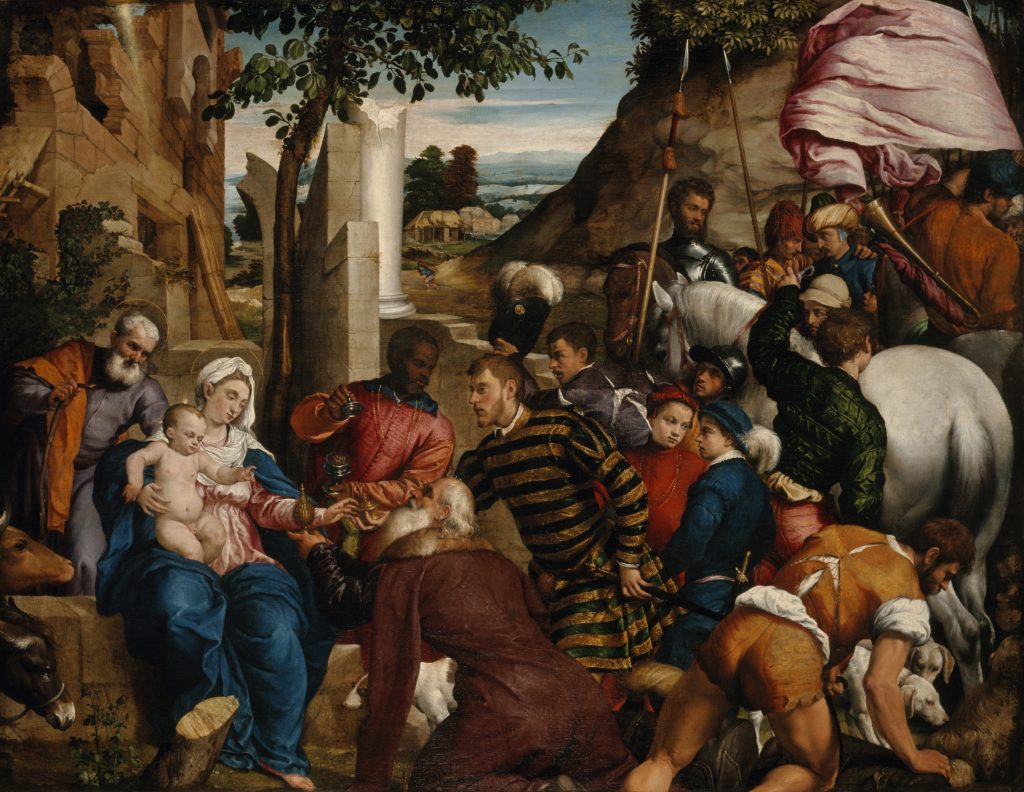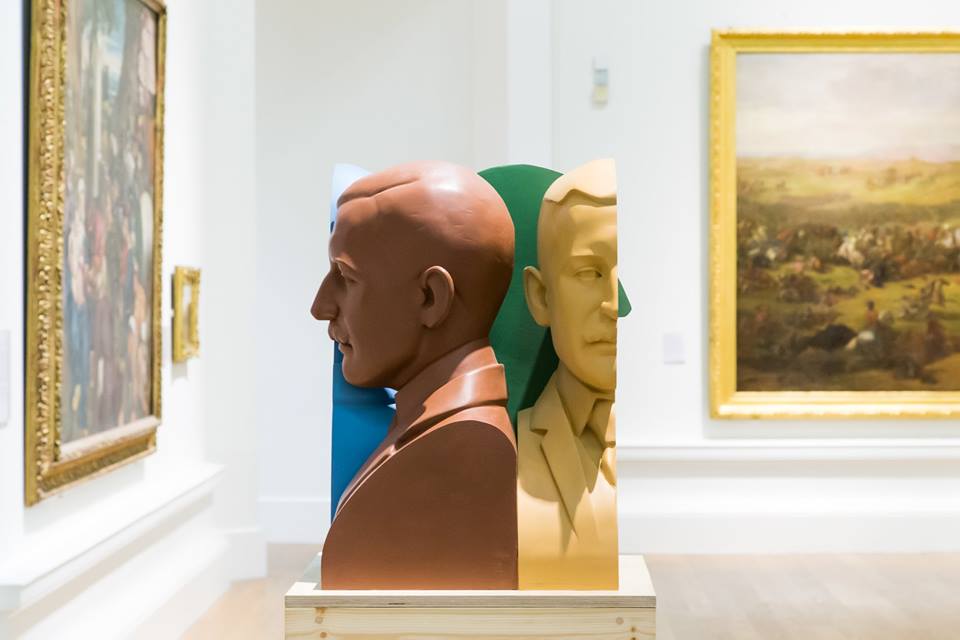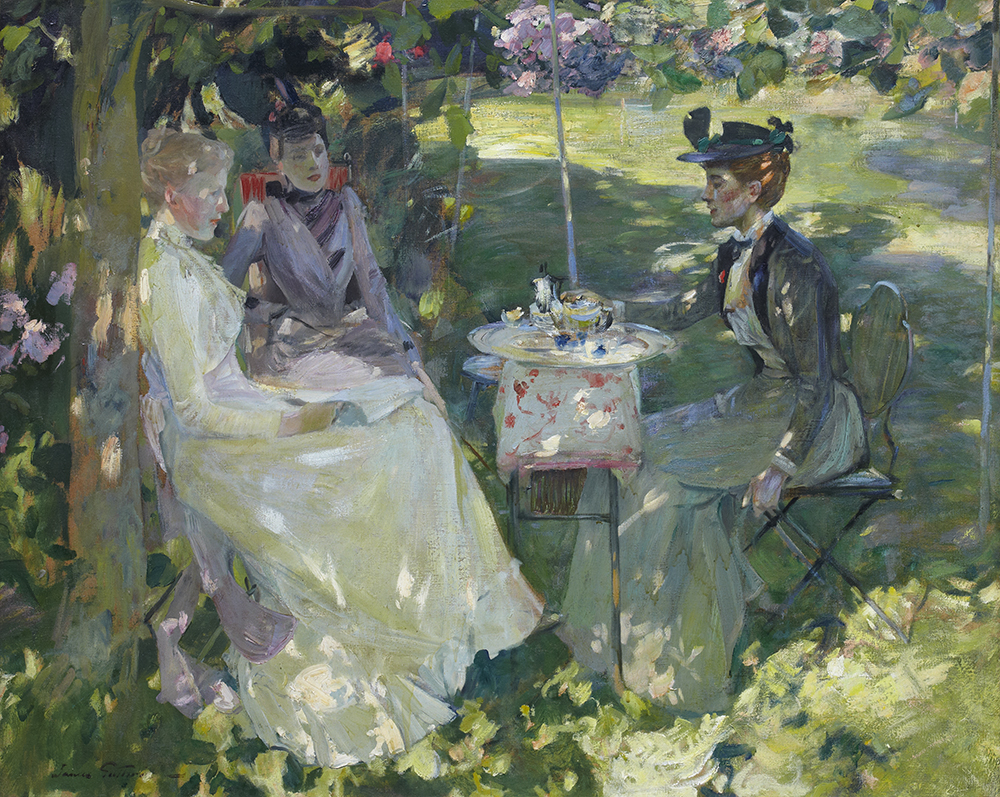A review of the new exhibition, Ages of Wonder, at the Royal Scottish Academy (Edinburgh, Scotland).
By Maro Psyrra
It is very common for museums and artistic institutions worldwide to present exhibitions of their collections or new acquisitions. These self-referential exhibitions, are mainly organized to narrate the cultural strategy and dynamic of each institution, and the necessity of its existence within the contemporary social framework, while also, in many instances, outlining certain political stances. In fact, in most cases, exhibitions of this kind, apart from being formal, are also particularly congratulatory of the choices of the institutions, forging at the same time the artistic values of each era.
‘Ages of Wonder’ which is currently being presented at the Royal Scottish Academy could have been just such an exhibition. The exhibition narrates the history of the academy, the relationships it has developed with artists and other artistic institutions from its foundation in 1826 until today, as well as its bonds with other artistic scenes throughout Europe. Nonetheless, there is a crucial difference between this exhibition and other similar institutional exhibitions: The Royal Scottish Academy, through the ‘Ages of Wonder’, does not boast about its collection, nor does it present it as a mausoleum of precious art. On the contrary, it seeks to share with the wider audience its ‘identity’, which does not constitute a permanent condition but rather it is constantly reconstituted, transformed and differentiated through the years, according to the changing needs of the times.
Taking as a historical hallmark the year 1910, which was marked by the transfer of important works from the RSA collections to the National Gallery of Scotland(1), the exhibition unfurls the undeniably interesting history of the Academy in a manner which distances itself from the norms of traditional exhibitional practices.
The most expected, and probably easiest, approach for curators would undoubtedly be a linear chronological presentation. However, the ‘Ages of Wonder’ constitutes a narrative experiment which harmoniously weaves together today with yesterday and present with past, while preparing us for the future.
Jacobo Bassano’s work, The Adoration of the Kings (1540) coexists with the works of William Dyce and David Roberts, while presented in the same space is the three-dimensional Portrait of James Guthrie by Kenneth (Kenny) Hunter, a recent commission by the RSA (2016). In a different room, side-by-side with the official portraits of the Presidents of the institution (e.g. David Allison, Sir George Washington Browne, 1938) characteristic examples of informal portraiture are juxtaposed, while the section is rounded out by Rachael Bibby’s video work Reflect, Study of a face perceiving itself, 2013. The game of contradictions culminates at the lower level gallery, where Wunderkammer by Richard Murphy is exhibited, a contemporary cabinet des curiosités which comprises material from the Academy’s Library and collections.

Jacopo BASSANO (ca. 1510–1592), “The Adoration of the Kings”, early 1540s. Oil on canvas, 183 x 235. cm.
Collection: National Galleries of Scotland
Purchased by the Royal Scottish Academy 1856; transferred to the National Gallery of Scotland 1910
Photo: Antonia Reeve

Portrait of James Guthrie by Kenny Hunter RSA – photograph by Douglas McCaffrey

Rachael Bibby, Reflect, “Study of a Face Perceiving Itself”, film still, 2013

Sir James Guthrie HRA PPRSA HRHA (1859-1930), “Midsummer”, oil on canvas,101.8 x 126.2cm, 1892,
Royal Scottish Academy of Art & Architecture (Diploma Collection), RSA Diploma Deposit, 1893.
Image credit: Andy Phillipson
The main protagonist of the ‘Ages of Wonder’ is undeniably the visitor. The exhibition is informative and educational, but at the same time deeply artistic – almost like an installation comprising the memories carried by the particular space. The teaching, the preparation, the artistic act and the experimentation are described though dozens of ‘narratives’ (The Academy as Teaching Institution, the 1910 Accord, the Nineteenth Century Through a Victorian Eye, the Contemporary Collection, the Wunderkammer, etc.), all characterized by a tendency to turn the exhibitional space into an experience. For example, within the exhibition the spectator can attend a live Life School with students, a live model and tutors (including John Byrne RSA, Jennifer McRae RSA, Robert Rivers and George Donald RSA) or even participate in the creation of etchings being made live on E. S. Lumsden’s historic etching press. Also at the lower level gallery, the visitor becomes familiarized with the concept of the artistic workshop, being in attendance as the artist Calum Colvin RSA creates one of his trademark photographic works. Apart from these interactive events, the curational endeavour itself is interactive par excellence and aims to directly engage the spectator with the exhibition. A characteristic example is the Victorian Room, which creates an effective time travel experience for the visitor. The 89 paintings hanging from the room’s walls – almost suffocatingly – evoke the 19th century manner of artistic display, transporting the spectator back through the centuries to that mode of viewing works of art.
The Royal Scottish Academy, through this grandiose exhibition succeeds in presenting 190 years of history in the most contemporary and at the same time unexpected way. This is undoubtedly a hallmark exhibition, not only for this particular institution but for the exhibitional history of Scotland in general. The multifaceted ‘identity’ of the Academy is clearly and deliberately revealed through this exhibition, simultaneously proving that the institution will enjoy many ages of wonder in the future.
AGES OF WONDER:
SCOTLAND’S ART 1540 TO NOW –
(Collected by the Royal Scottish Academy)
4 November 2017 – 7 January 2018
Royal Scottish Academy, The Mound, Edinburgh, EH2 2EL
royalscottishacademy.org | nationalgalleries.org
#AgesOfWonder
- A Parliamentary Order in 1910 transferred the Academy to the adjacent premises which was formerly known as the Royal Institution. In return, the Academy gifted 96 paintings and sculptures and approximately 2,000 drawings to the National Gallery of Scotland. This building has been the venue for the Academy’s Annual Exhibitions since 1911. More: http://www.royalscottishacademy.org/about-us/history-of-the-rsa/)


